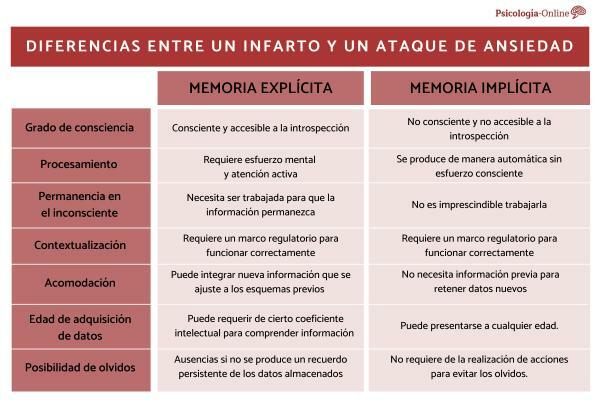
The ability to formulate hypotheses and be able to test them is not a skill that has accompanied us throughout our lives. Our way of thinking changes with development, accompanied and also supported by the development of our own nervous system.
A child may know that if she presses a certain button the television will turn on, but what if it does not turn on? Surely, go to the adult, who will be able to come up with various explanations of what may be happening. It will check if the remote control has batteries, if they have worn out, if the television has the pilot that indicates that it is plugged into the current, etc.
The adult, through his development, has acquired the ability to think abstractly or formally. Do you want to know more about it? Continue reading this Psychology-Online article in which we talk about abstract thinking: what it is, examples and how to develop it.
The Abstract thinking or formal thought consists of the ability to think independently of the reality that is shown to us in a concrete way
In the simplified example that we have exposed in the introduction, the child is not able to think beyond the reality in front of him, which is that the television does not turn on. The adult, however, may think further, establish hypotheses, test them and thus solve the problem.
Abstract thinking, contextualized in Piaget's theory, appears in the last stage of development: the stage of formal operations. For Vygotsky, it is precisely this acquisition that makes the difference between the child's thinking and the adolescent's thinking.
As we have indicated, formal thought is what characterizes the last stage of Piaget's cognitive development. Piagetian theory postulates that cognitive development occurs over several phases or stages, more or less lasting depending on each person but necessarily successive.
The acquisition of abstract thinking begins around the age of 11 (incipient formal stage) and is consolidated after 14 or 15 years (advanced formal stage). Although it is true that Piaget modifies his initial theories and indicates that it is at the age of 20 when he consolidates said evolutionary acquisition (Aguilar Villagrán, M., Navarro Guzmán, J.I., López Pavón, J.M. and Alcalde Cuevas, C., 2002)[1].
Until this acquisition occurs in adolescence, the child has gone through various stages of development in which his way of thinking has been qualitatively different.
1. Sensory-motor stage
It ranges from birth to two years and is linked to sensory and motor development. Baby's thought would be circumscribed "Here and now".
2. Preoperational stage
This stage ranges from 2 to 7 years approximately. At this stage the symbolic thought, so that the child can think about facts or objects that are not present at that moment. He can think of the ball that you showed him a few days ago or the toy that his classmate has and liked it so much.
3. Stage of concrete operations
Although from 7 to 11 years old children are capable of performing complex mental operations (conservation tasks, classification, seriation, etc.) his way of thinking presents a limitation, and that is that the child has to manipulate or see things in order to think about them. If asked to imagine them, he will not give a correct answer. On the preoperational stage, therefore, begin to use logic and mental operations but only for facts and objects in their environment, in their concrete reality.
4. Formal Operations Stadium
For Piaget, the most important characteristic of this new way of thinking would be the fact that be able to think in terms of possibilities and not just realities. Adolescents go beyond immediate reality and begin to discover that reality can be much broader than what they have in front of them, which will significantly influence their conduct.
Following Sierra, P. and Brioso, A. (2006)[2], the adolescent differentiates between what is real and what is possible using, necessarily, hypothetico-deductive reasoning and reasoning on verbal sentences instead of reasoning on objects concrete.
This would be the last stage of Piagetian theory, however the existence of a postformal thought, subsequent to formal thought, has been proposed. This post-formal thinking would go beyond formal reasoning that yields right or wrong results and would propose solutions to problems.
In the introduction to this article we have presented a simplified example of abstract thinking in which the person is able to think in hypotheses and possibilities beyond what the concrete reality shows him.
- Deductive reasoning it is a clear example of abstract thinking. Trying to exemplify this type of reasoning, we can think “All people breathe. My cousin is a person, therefore my cousin breathes ”.
- Make hypotheses. In a more ecological and less theoretical example, imagine that you are meeting a friend who is late. You write him a message and he doesn't answer. Our abstract thinking will allow us to establish hypotheses about what could have happened: you have forgotten something and he has turned around, the bus has been delayed, there is a traffic jam, he does not want to answer us, a problem has arisen, etc.
- Create a work of art it is an example of obstacle thinking, be it the colors of a painting or the notes of a musical work.
- Imagine the future: the future is something that we cannot touch or know, so it is part of abstract thinking. For example: planning for the future or simply thinking ahead are examples of abstract thinking.
- Analyze the pastGetting out of the present involves using this type of thinking, so reflecting on the past is another example of abstract thinking.
In general, any task that requires deductive reasoning or requires the person to think of various possibilities will set in motion formal mechanisms of thought. For instance:
- Solving mathematical problems: in these we must apply the mathematical rules and formulas and, on many occasions we need to think the problem from different perspectives to find the solution, therefore, it is a good reasoning exercise abstract.
- Solving riddles and puzzles: this abstract reasoning activity helps to develop this type of thinking since to solve them we must go beyond their literal message.
- Resolution of syllogisms: we can offer two premises and request the conclusion.
This article is merely informative, in Psychology-Online we do not have the power to make a diagnosis or recommend a treatment. We invite you to go to a psychologist to treat your particular case.
If you want to read more articles similar to Abstract thinking: what it is, examples and how to develop it, we recommend that you enter our category of Cognitive psychology.


